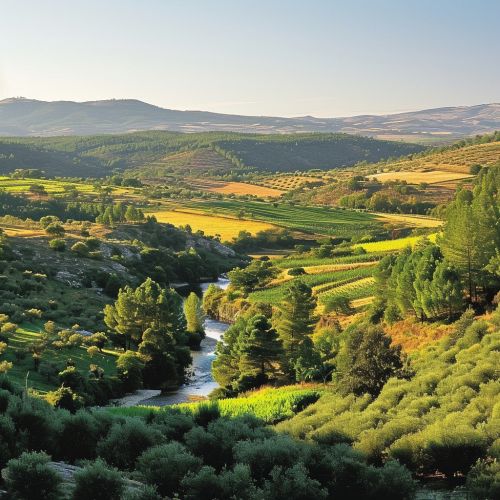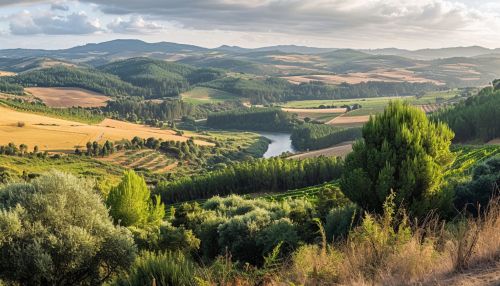Geography of Portugal
Geography of Portugal
Portugal, officially known as the Portuguese Republic, is a country located in the Iberian Peninsula, in the southwestern part of Europe. The geographical location of Portugal, its diverse natural landscapes, and its unique climate contribute significantly to its physical geography. The country is bordered by the Atlantic Ocean to the west and south and by Spain to the east and north. The geographical coordinates of Portugal are approximately 39.4° N latitude and 8.2° W longitude.
Physical Geography
Portugal's physical geography is characterized by its diverse landscapes, which include mountains, rolling plains, river valleys, and a long coastline. The country can be divided into three main geographical regions: the mountainous north, the plains in the central region, and the southern region known as the Algarve.


Northern Region
The northern region of Portugal is predominantly mountainous, with the highest peak, Serra da Estrela, reaching an altitude of 1,993 meters. This region is characterized by its rugged terrain, with numerous valleys carved by rivers such as the Douro, Minho, and Tâmega. The region's climate is influenced by the Atlantic Ocean, resulting in mild, rainy winters and warm, dry summers.
Central Region
The central region of Portugal is characterized by rolling plains and river valleys. The most significant river in this region is the Tagus, which is the longest river on the Iberian Peninsula. The climate in the central region is Mediterranean, with hot, dry summers and mild, wet winters.
Southern Region (Algarve)
The Algarve, located in the southernmost region of Portugal, is characterized by its flat terrain, sandy beaches, and warm, sunny climate. The region's coastline is dotted with numerous coves, cliffs, and golden beaches, making it a popular tourist destination.
Climate
Portugal's climate varies significantly from north to south and from coast to inland. The country has a Mediterranean climate, characterized by hot, dry summers and mild, wet winters. However, the northern region experiences a more Atlantic-influenced climate, with cooler temperatures and higher rainfall. In contrast, the southern region, particularly the Algarve, experiences a warm Mediterranean climate with hot, dry summers and mild, wet winters.
Hydrography
Portugal's hydrography is characterized by its numerous rivers and the significant role of the Atlantic Ocean. The country's main rivers are the Douro, Tagus, and Guadiana, all of which originate in Spain and flow into the Atlantic Ocean. Portugal's coastline, stretching for 1,794 kilometers, is dotted with numerous ports, bays, and estuaries, which play a crucial role in the country's economy, particularly in terms of fishing, shipping, and tourism.
Biodiversity
Portugal's diverse landscapes and climates contribute to its rich biodiversity. The country is home to numerous species of flora and fauna, some of which are endemic to Portugal. The country's biodiversity is protected through a network of natural parks and reserves, which cover approximately 8% of the country's total land area.
Human Geography
Portugal's human geography is characterized by its population distribution, urbanization, and economic activities. The country's population is concentrated in the coastal regions, particularly in the cities of Lisbon, the capital, and Porto. Portugal's economy is diverse, with significant sectors including tourism, agriculture, fishing, and manufacturing.
